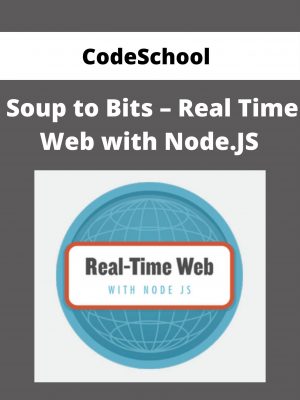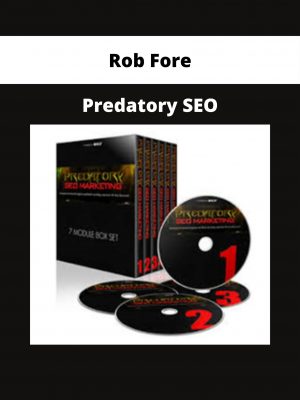Stone River eLearning – DevOps with AWS Command Line Interface
$99 Original price was: $99.$33Current price is: $33.
Shopping Instructions:
- DISCOUNT 15% : SHOP15
- Product Delivery: Within 1 – 12 hours after purchase.
But do you ever wonder how you can orchestrate and manage your AWS resources in an easy and efficient manner?
Stone River eLearning – DevOps with AWS Command Line Interface
Whether you are an experienced AWS user or are just getting started with cloud computing. You know it is quite easy to get your infrastructure components deployed in the AWS cloud.
But do you ever wonder how you can orchestrate and manage your AWS resources in an easy and efficient manner? How do you automate the deployment and configuration of your EC2 instances, your IAM users, your elastic load balancers and numerous other AWS components services that your applications rely on?
If so, then we know exactly where you’re coming from.
AWS does provide a very useful web based management console to deploy and manage all these cloud resources. The AWS management console works nicely if you have to occasionally make some changes to your cloud infrastructure which comprises of a few components.
But for a cloud architect or a cloud administrator who tend to manage tens or hundreds or even thousands of cloud resources – using the AWS management console may be too time-consuming and inefficient.
AWS also provides a powerful command line interface which can be used to manage AWS services known as AWS CLI.
AWS CLI stands for Amazon Web Services Command Line Interface.
It is a comprehensive and essential toolset provided by AWS which helps software engineers, IT and operations teams and DevOps engineers manage their cloud services and resources. It is a command line interface tool which facilitates automation by using scripting to operationalize your AWS resources from the command window or terminal.
If you are serious about automating your AWS based cloud infrastructure – then using the AWS CLI toolset in conjunction with bash scripting is the only way to go. And when any startup or technology company is looking to implement DevOps practices to automate their cloud infrastructure – they are willing to pay big money for cloud engineers and consultants to help them manage their cloud infrastructure. In fact, the hourly rates cloud engineers are easily few hundred dollars an hour. And the demand for these skills is just exploding.
Wouldn’t you want to acquire these skills and be a part of this cloud computing revolution? Be highly sought after and take your career to the next level
That’s why today, we are thrilled to be able to share with you – our new training program “AWS MasterClass: Learn all about AWS Client Line Interface (CLI).”
In this course, you will get an in-depth look at this comprehensive and essential toolset called AWS CLI.
AWS CLI can be used to manage various AWS services like EC2, IAM, ELB, ECS and many others. In this course, we will dive deep into many of these services and learn how we can deploy, configure and manage some of the key cloud components available for these services.
You will find real actionable information and education in exchange for your time, willingness to learn and a fraction of the cost you will be able to demand as a cloud engineer or consultants. We can guarantee that you will get your investment back manyfold in no time.
Get immediately download Stone River eLearning – DevOps with AWS Command Line Interface
Course Curriculum
Welcome and Introduction
Welcome and Introduction (2:09)
Course overview (3:56)
Get ready for AWS CLI (0:54)
Introduction To AWS
Introduction to AWS (7:46)
Benefits of the AWS cloud (6:32)
Who is using AWS? and Why? (5:51)
Services provided by AWS (3:41)
Services provided by AWS #2 (6:49)
AWS – a leading cloud platform (5:58)
Introduction to AWS CLI
Introduction to AWS CLI (2:38)
Install AWS CLI on Windows (3:53)
Install AWS CLI on Linux (3:42)
Configure AWS CLI (5:37)
AWS CLI output formats (4:26)
AWS CLI configuration (4:17)
AWS CLI help and documentation (3:26)
Module 3:Quiz
AWS CLI setup
AWS CLI setup (3:29)
AWS CLI auto completion (5:26)
AWS CLI filter option (4:46)
AWS CLI query option (5:47)
AWS CLI dry-run option (2:59)
Introduction to JMESPath terminal (7:51)
Setup JMESPath terminal (5:14)
Module 4 :Quiz
AWS CLI Commands For AWS EC2
AWS CLI and AWS EC2 (6:20)
AWS EC2 instances (2:58)
AWS EC2 components (3:50)
AWS EC2 key pair (3:55)
AWS security groups (6:54)
AWS AMI and AWS VPC (3:01)
Deploy AWS EC2 instance (6:28)
AWS elastic IP address (5:32)
Terminate AWS EC2 instance (3:00)
Module 5 : Quiz
AWS CLI Commands For AWS S3
AWS CLI and AWS S3 (8:11)
AWS CLI commands for AWS S3 (3:02)
Upload data to AWS S3 via AWS CLI (5:28)
Manage AWS S3 objects using AWS CLI (4:42)
Move and synch AWS S3 objects using AWS CLI (7:10)
Delete AWS S3 objects using AWS CLI (2:53)
Module 6: Quiz
AWS CLI Commands For AWS IAM
AWS CLI commands for AWS IAM (4:18)
List and create AWS IAM users using AWS CLI (4:58)
Manage AWS IAM using AWS CLI (9:13)
Manage AWS IAM using AWS CLI #2 (5:59)
Module 7: Quiz
AWS CLI Commands For AWS ELB
AWS CLI and AWS ELB (5:54)
AWS CLI commands for AWS ELB (2:59)
AWS CLI commands for AWS ELB #2 (10:12)
AWS CLI commands for classic AWS ELB (5:45)
AWS CLI commands for internal AWS ELB (4:12)
AWS CLI commands for ELB (contd.) (3:22)
Module 8: Quiz
AWS CLI Commands For AWS SNS & AWS SQS
AWS CLI commands for AWS SNS and AWS SQS (5:31)
AWS CLI commands for AWS SNS (7:14)
AWS CLI commands for AWS SQS (6:24)
AWS CLI commands for AWS SQS (contd.) (6:12)
Module 9: Quiz
AWS CLI Commands For AWS ECS
AWS CLI commands for AWS ECS (5:10)
AWS CLI commands for AWS ECS clusters (4:28)
AWS CLI commands for container instances in AWS ECS (6:37)
AWS CLI commands for AWS ECS task definition (7:47)
Module 10: Quiz
AWS CLI Commands For AWS SES
AWS CLI commands for AWS SES (10:01)
AWS CLI commands for AWS SES (contd.) (3:41)
Module 11 : Quiz
AWS CLI Commands And Shell Scripting
AWS CLI and shell scripting (5:21)
Search for AWS EC2 instances using AWS CLI and shell scripting (4:14)
Search for AWS AMIs using AWS CLI and shell scripting (3:42)
Create AWS VPC and Subnets using AWS CLI and shell scripting (5:30)
Module 12: Quiz
Frequently Asked Questions
When does the course start and finish?
The course starts now and never ends! It is a completely self-paced online course – you decide when you start and when you finish.
How long do I have access to the course?
How does lifetime access sound? After enrolling, you have unlimited access to this course for as long as you like – across any and all devices you own.
What if I am unhappy with the course?
We would never want you to be unhappy! If you are unsatisfied with your purchase, contact us in the first 30 days and we will give you a full refund.
Read more: https://archive.is/lx54a
Be the first to review “Stone River eLearning – DevOps with AWS Command Line Interface” Cancel reply
Related products
SEO & Design Website
SEO & Design Website
Mike Reinold & Eric Cressey – Functional Stability Training for the Upper Body
SEO & Design Website
SEO & Design Website
SEO & Design Website
SEO & Design Website
SEO & Design Website
SEO & Design Website













Reviews
There are no reviews yet.